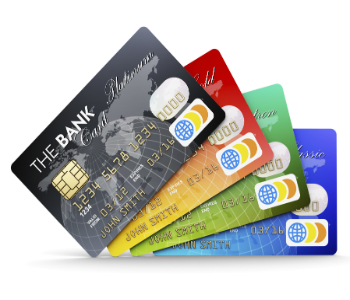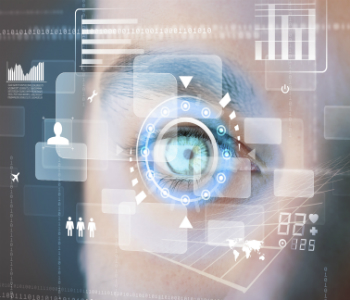A biometric solution at ATMs could add another layer of security that can’t be copied or stolen and has the potential to further reduce the risk banks face.
Card skimming still remains a major risk for banks and financial institutions. The introduction of smart cards with an embedded chip was supposed to be a more secure way to protect the data; however, since in many cases the card still has a magnetic stripe, the magnetic stripe data still can be skimmed by crime gangs and used in locations where the smart chip is not a requirement.
 Smart cards with an embedded chip were
Smart cards with an embedded chip were
supposed to be a more secure way to protect data.
A biometric solution adds another layer of security that can’t be copied or stolen and has the potential to further reduce the risk banks face. Biometric identification has so far been implemented in national IDs, border crossings, and in workforce management environments (e.g., access control and time attendance) but it wasn’t until recently that it became a potential solution for ATMs.
“Iris identification was always considered a good solution for identity authentication because of accuracy and speed. However, there was always an economic issue, equipment size, and price prevented adoption in ATM environment,” said Mohammed Murad, VP of Global Sales and Business Development at Iris ID. “However, in the last few years it has become economically affordable and technologically feasible from a size perspective. We have deployed ATM pilots in Korea, the Middle East, and other places and so far progress is positive.”
Murad explained that iris identification is a good fit for ATMs as it has a small footprint, so the transaction times accessing the database and verifying ID are very fast. In addition, this form of identification is anonymized. The picture of the iris is translated to a sequence of zeroes and ones and compared to a similar template stored in the database. There is no way to recreate the image of the iris from this template. As far as architecture is concerned, iris identification can be done in several ways, it can use a central database or use credentials stored on the client’s smartcard or smartphone (utilizing NFC).
 Iris recognition and other biometric identification
Iris recognition and other biometric identification
could be a good way to ensure user ID at ATMs.
Biometric identification will probably not eliminate the use of cards. Standardizing biometrics across banks will be very complicated and time consuming and it appears that clients will use biometrics with their own bank but will probably still use a pin when they access an ATM outside of their network.
There is still a fair amount of road to cover before the wide scale adoption of biometrics for ATMs, however pilots like Iris ID’s as well as other companies are slowly turning it into reality.
“Financial institutions are very conservative; technology shift is not easy or simple. So progress will be slow but signs are positive,” Murad said. “Initially, most financial institutions will use a biometric identifier along with ATM cards and PIN numbers to access financial transactions. Over time, a biometric solution such as an iris-based system will likely eliminate the need for PINs.”
The next phase
Bank cards migrated from magnetic stripes to chips for higher security, the next phase will most likely be migrating to iris or fingerprint identification. The use of biometric identification in ATMs is an interesting prospect to overcome issues of ATM card fraud and skimming. Biometrics will enable multifactor identification which will raise the level of security and greatly reduce the risk of identity theft. However, it is only one more step in the constant competition between banks and criminals. The latter will no-doubt try to overcome these measures. It will be interesting to see what solutions the industry will come up with next.